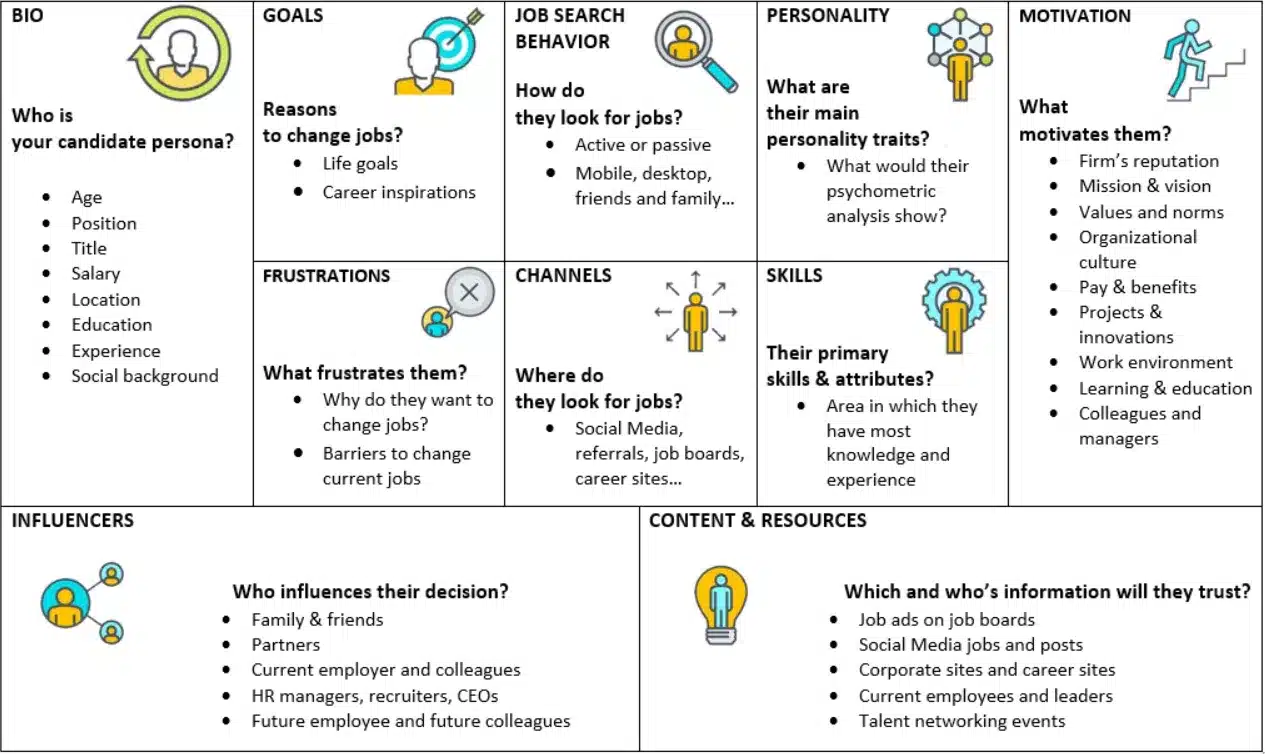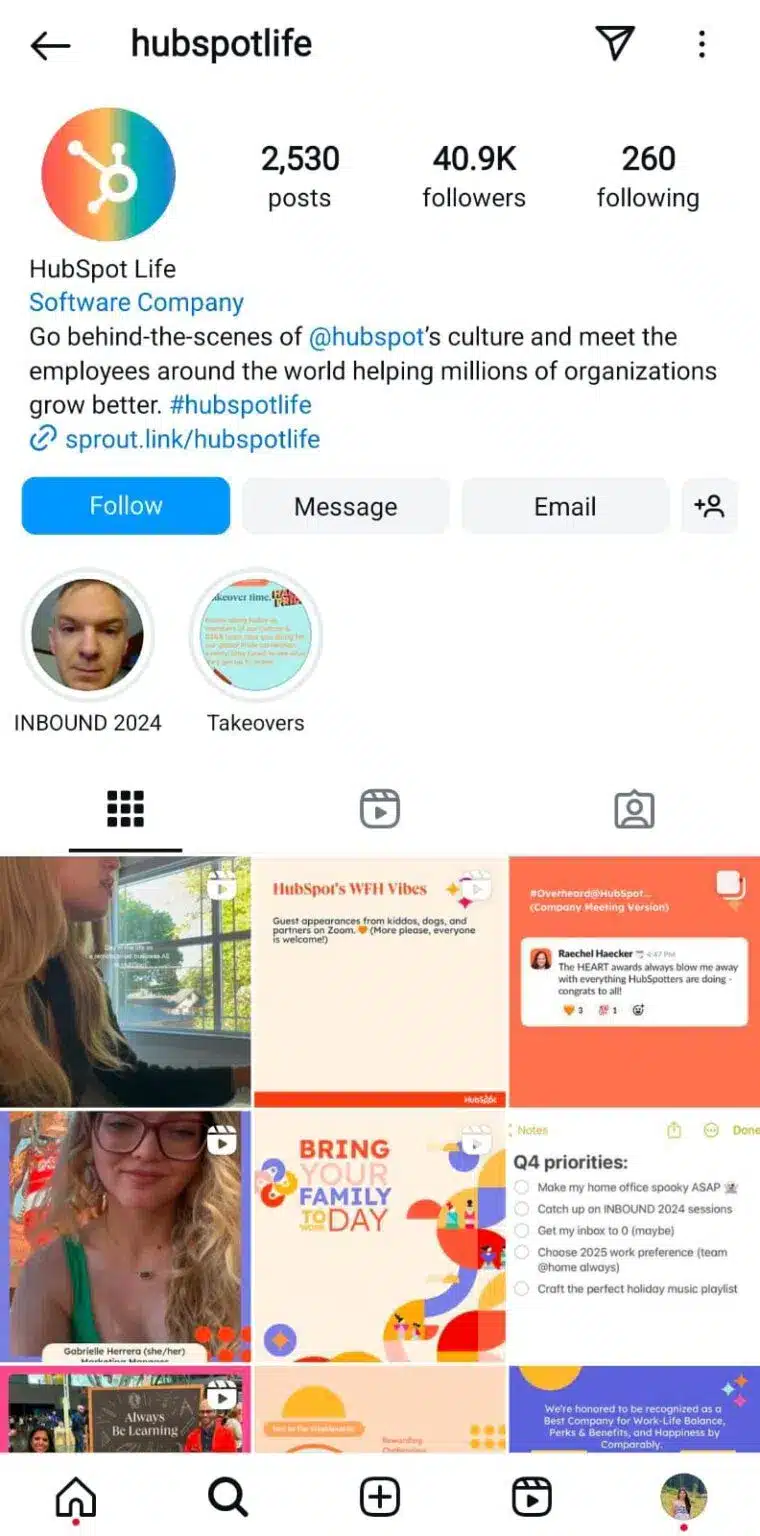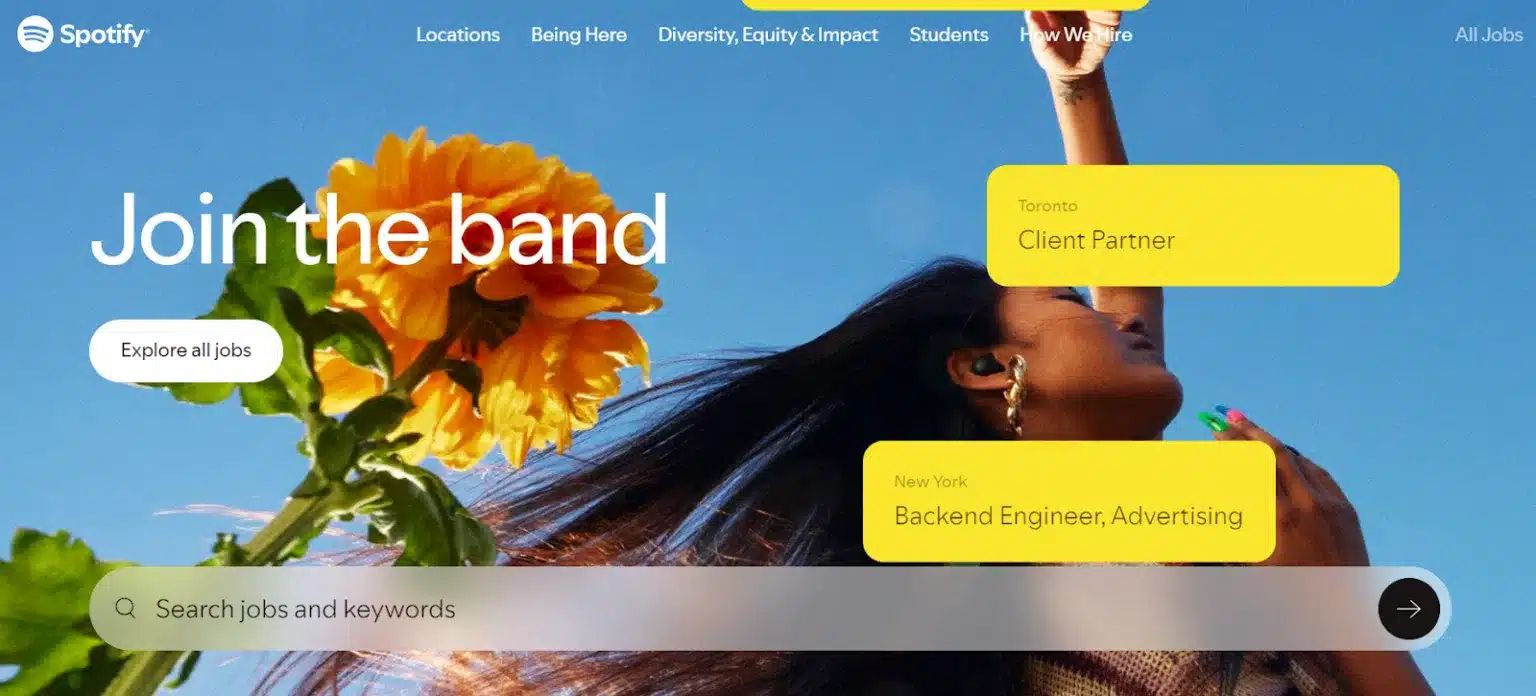Mary, a skilled developer, isn’t actively looking for a job. But she still passively surfs job sites and career sections of her dream companies.
This isn’t about Mary alone. This is the story of millions of employees.
How do you attract Mary and those thousand other qualified candidates to fill your open positions? How do you build an employer brand that eases recruiting in the long run?
A simple solution is to create an inbound recruiting strategy.
In this guide, we’ll share 10 tried-and-tested tips to help you build a solid inbound recruiting strategy. Let’s dive in.
What is Inbound Recruiting?
Inbound recruiting is a candidate-centered approach to creating a talent pipeline that attracts and engages candidates throughout the recruitment process. It involves building a strong employer brand and performing recruitment marketing.
For example, if you include solid employee testimonials in the careers section of your website, you’re effectively performing recruiting marketing.
Here’s what the inbound recruiting methodology looks like, courtesy of HubSpot.

The Business Case for Inbound Recruiting
Implementing an inbound recruiting strategy not only attracts candidates but also reduces hiring costs and time to fill in the long run. Here are three additional reasons that make a strong business case for inbound recruiting.
- Get diverse candidates: Marketing in inbound recruiting attracts a larger pool of candidates, helping diversify your existing team. For example, Amazon has a Women in Tech community to encourage more women to apply to their tech positions.
- Boost employer brand and marketing: Inbound recruiting focuses on creating a strong brand that attracts candidates. This also improves the candidate experience. When candidates talk about it to other people, it serves as an additional form of marketing.
- Longer-term results than outbound recruiting: Inbound recruiting provides you with a constant supply of candidates, and you don’t need to relaunch your recruiting efforts from time to time.
10 Best Practices to Create Your Inbound Recruiting Strategy
Multiple roads lead to one destination. Similarly, there are multiple ways to build your inbound recruiting strategy. Some companies may focus heavily on promoting recruitment through social media. At the same time, others may pick a more laid-back approach by creating powerful landing pages.
You can start with these ten tips and tweak them based on your goals and results.
1. Align Inbound Recruiting with Organizational Goals
Are you planning to expand in a particular location soon? Or are you trying to onboard more empathetic professionals in your call center?
These strategic goals will be the basis for how you go about inbound recruiting. For example, in the first case, your marketing efforts should target candidates from a particular location. If you are creating PPC ads, set the location as a criterion.
If your goal is to onboard more empathetic professionals, portray those values in the careers section of your website. Or create social media posts where current employees talk about empathy.
By aligning these goals, you ensure inbound recruiting brings results that help achieve goals at the larger level.
2. Understand Your Target Candidates
You don’t want to attract the wrong people with inbound recruiting. It will only increase the time spent screening and qualifying candidates.
One way to avoid this is by creating candidate personas. How does this help?
- In creating content that your desired candidates will find most valuable
- In selecting platforms where you need to be most active. Think Instagram, LinkedIn, or industry forums.
- In understanding what candidates value most during recruitment and implementing that in your processes
At Peoplebox, we create candidate personas by starting with these three questions:
- What knowledge, skills, and qualifications are we looking for?
- What tasks will they do on a daily basis?
- What demographic data or personal attributes will be the focus?
Here’s a candidate persona template you can use.
Suggested Read: Top 9 Candidate Screening Software 2024

3. Leverage Multiple Channels
Don’t rely on just one channel to attract candidates. Instead, use a mix of channels where your target candidates are most active.
For example, HubSpot has a separate Instagram account called “HubSpot Life” where it shares employee stories and what it’s like to work at HubSpot.

HubSpot does not stop there. The company maintains an active presence on various platforms such as LinkedIn, Twitter, career pages, and ads.
Here are some best practices you can follow while using multiple channels for inbound recruitment.
- Tailor content for each platform. Reels may be popular on Instagram, but longer-form videos are more engaging on YouTube.
- Ensure employer brand messaging is consistent across all channels.
- Use consistent logos, imagery, and colors so candidates can easily recognize your brand.
- Track performance by channel to narrow down the platforms that attract passive candidates.
4. Create and Promote Content
Picture this. You come across a video where an employee talks about how great it is to work at Company X. You hear their story and learn the perks from a trusted source. Would this influence you to apply for a relevant position at that company? Probably yes.
That’s the power of inbound marketing when it comes to recruiting.
Here are four ways to create and promote content:
- 70% of job searches begin on Google. Use the right keywords on your landing page, ads, and job postings to attract job seekers who are searching for relevant keywords on Google.
- Create a section on your blog where you share employee journeys. Here’s an example from Google.

- Build a landing page that enhances the applicant experience and encourages them to apply for open roles. One of my favorites is Spotify’s careers page. It sticks true to its niche and provides a fun way for candidates to know more about the company and open roles.

- Utilize ads to draw candidates searching for similar jobs you offer.
5. Build a Talent Community
Many potential candidates may not be looking for a job change right now. But what if they want to stay notified about future openings? One way to engage these candidates is by building a talent community.
While this is great for all companies, it’s a must for service companies as they keep requiring people from a particular field as they expand. For example, TripleDart is a SaaS marketing agency that regularly adds more writers to its community.
How does it help?
Whenever they require a writer from a particular niche for their client, they can go back to their network, search for the writer’s niche, and get in touch with them.

6. Sponsor Events
To get more candidates, many companies host local events or networking meets. It allows you to showcase company culture and build relationships with potential employees.
For example, Amazon sponsors and participates in numerous tech conferences like AWS Global Summits and Grace Hopper Celebration.
They host these events to connect with professionals in cloud computing, software development, and AI. They also try to hire people from underrepresented groups via some of these events.
While not all companies can host events on such a large scale, we recommend starting with online events that are cost-effective and easy to handle. You can even host local events on a smaller scale.
Pro-tip: Follow up with people who attended your event. This could mean following them on LinkedIn, sending a quick email, or inviting them to your talent community.
7. Build a Compelling Employer Brand
Building a strong employer brand attracts top talent and boosts retention. Here are four tips to get started.
- Use employee stories to show what working for your company is like. Highlight career journeys, daily experiences, and achievements. Here’s how Adobe showcases this.

- Inculcate employee testimonials on your careers page. Canva showcases these testimonials and also includes employee pictures to build more trust.

- Talk about company culture. Here’s how HubSpot does it.
- Monitor online reputation on review platforms like Glassdoor and Indeed. Don’t ignore negative reviews. Instead, highlight changes or improvements being made in response to the criticism.
Also read: 13 Candidate Relationship Management (CRM) Tools to Transform Your Talent Pipeline
8. Vet Talent from Your Community
When your community grows, you must vet talent to assess if they fit your organization. For example, if you’re looking to hire a software developer, you need to assess if candidates possess the right skills and knowledge about the coding language your business uses.
One easy way is to use resume screening software. Peoplebox’s AI-powered screening tool helps reduce applicant review time by 90%. It gives you a profile of each candidate with strengths, weaknesses, and an overall score.
You can even uncover critical insights of the candidate available in the public domain.
The Ultimate Guide to AI in Recruitment
9. Nurture Relationships Through Candidate Engagement
Many candidates will join your community. But not everyone will apply for the open roles you share. One reason is they don’t want to switch jobs. Another more ignored reason is you have not nurtured these candidates.
One way to nurture relationships is to set up email sequences. For example, when someone joins your community, share a welcome email and direct them to helpful content. A few days later, you can share employee stories with them and let them know you’re looking forward to seeing them apply for roles.
You can even invite them to join your social media network. This will keep the candidates engaged and improve the overall candidate experience.
10. Measure and Track Results
To optimize your inbound recruitment strategy, you need web analytics. Here are four simple ways to measure results:
- Use Google Analytics to monitor the traffic on your careers page and other relevant landing pages or blogs.
- Calculate your application completion rate. This shows how many applicants complete the entire application process compared to the total number of applicants.
- Use Google Search Console to nail down the keywords that bring the most traffic.
- Compare different channels or social media platforms to pinpoint which ones are most effective at attracting candidates.
You can even add more metrics, such as time to hire and cost per hire, to measure how inbound recruiting compares to outbound recruiting.
Find Qualified Candidates With Inbound Recruiting
Setting up an inbound recruiting strategy ensures you don’t have to keep pushing candidates to apply to your company. You also attract qualified candidates who otherwise don’t pick up recruiter’s calls.
While planning your strategy, start with proper research about your ideal candidates and where they would be most active. Follow up with channel-specific plans and build consistent brand-centric messaging.
Once you start receiving resumes and applications, you can run them through Peoplebox’s AI resume screening software to hire candidates faster.







